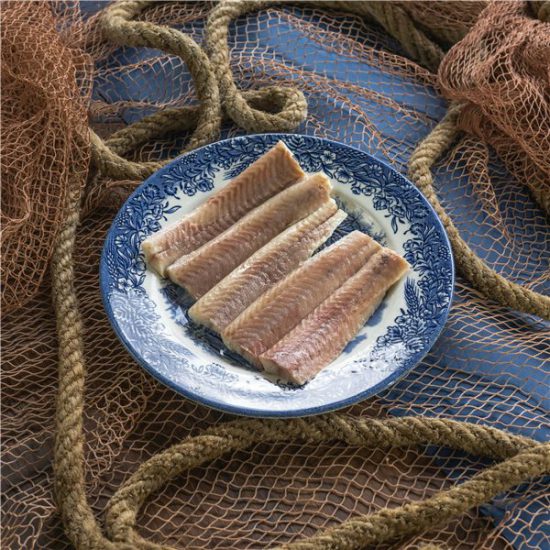
- Readers Rating
- No Rating Yet!
- Your Rating
When talking about certain foods, some terms can be easily confused. A good example of this is the difference between gula, angula, and eel. Although these names sound similar and are related to gastronomy, each one refers to very different products in terms of origin, nutritional value, and price. In this article, we will explore in detail what each one is, why they are often confused, and what benefits they can bring to our diet.
What is eel?
eel is a fish with an elongated body and smooth skin that belongs to the Anguillidae family. Its scientific name is Anguilla anguilla, and it is a species found in the rivers and seas of Europe and North America. A distinctive characteristic of eels is their anadromous life cycle: they are born in the sea, migrate to rivers to grow, and then return to the sea to reproduce.
the meat of eel is highly valued in different cuisines, especially in Japanese cuisine, where it is consumed as unagi (freshwater eel) or anago (saltwater eel). It is also a traditional dish in some regions of Spain, Italy, and the United Kingdom.
Nutritional properties of eel
eel is a fatty fish, rich in omega-3 fatty acids, high-quality proteins, and various vitamins and minerals. Its main benefits include:
- high content of vitamins A and D.
- source of healthy fats that contribute to cardiovascular health.
- significant supply of proteins, essential for muscle maintenance.
its flavor is intense and fatty, making it perfect for smoked, grilled, or stewed dishes.
What is angula?
angulas are the juvenile stage of the European eel (Anguilla anguilla). They are characterized by their translucent appearance and small size, measuring between 6 and 8 centimeters. They are highly valued in Spanish cuisine, where they are traditionally prepared al ajillo with olive oil and chili.
due to overfishing and the decline in eel populations worldwide, angulas have become an extremely expensive and exclusive product. Their high price has led to the creation of more affordable substitutes, such as gula.
Nutritional properties of angulas
since angulas are juvenile eels, they share some nutritional characteristics with the adult fish, although their fat content is lower. Their benefits include:
- high content of easily digestible proteins.
- supply of minerals such as phosphorus and calcium.
- low in fats, ideal for light diets.
What is gula?
gula is a processed food product created as an economical substitute for angulas. It is made from surimi, a fish paste obtained from white fish species such as pollock or hake. This paste is shaped into small white strips with a dark stripe to mimic the appearance of angulas.
gula became popular in Spain in the 1990s as a more affordable alternative to angulas. Its taste and texture try to resemble the original product, although its nutritional composition is different.
Nutritional properties of gula
since it is made from surimi, gula is a low-fat food with a moderate protein content. Its characteristics include:
- lower calorie content compared to angulas.
- source of marine-origin proteins.
- lower amount of fats and essential fatty acids than eel.
- may contain additives or preservatives depending on the brand.
Why are eel, angula, and gula often confused?
the confusion between these three terms is mainly due to their phonetic similarity and their relation to cuisine. Additionally, the fact that gula was specifically created to imitate angulas contributes to the general misunderstanding.
some factors that lead to confusion include:
- similar names: “eel,” “angula,” and “gula” sound alike, which can cause mix-ups.
- gastronomic relation: all are associated with cooking, especially in Spanish and Japanese cuisine.
- visual resemblance: gula is designed to look like angula, although its taste and texture are not identical.
- price and market: many people have tried gula believing they were eating real angulas, as marketing plays on this similarity.

Which is the best option from a nutritional standpoint?
each of these options has advantages and disadvantages depending on diet type and individual needs:
- if you are looking for a source of omega-3 and high-quality proteins, eel is the best option, although its fat content is high.
- if you prefer a low-fat alternative rich in proteins, angulas are an excellent choice, though they are expensive and not widely available.
- if you want a more affordable and accessible option, gula is the best alternative, though its nutritional profile is not as complete as the natural options.
even though eel, angula, and gula may seem similar due to their names and culinary use, they are actually very different products in terms of origin, nutritional value, and price. eel is a fatty fish rich in omega-3, angulas are its juvenile form and an exclusive delicacy, and gula is an imitation made from surimi.
when choosing between them, it is important to consider factors such as taste, nutritional value, and budget. now that you know their differences, you can make a better decision the next time you find them in the supermarket or a restaurant. if you found the difference between gula, angula, and eel interesting, follow our blog to stay updated!


